How a rug is constructed affects its appearance, quality, texture, durability, longevity and cost. Knowing some basics about rug construction can help you make the right choice for your client. We work closely with you to help determine the best option to meet your design goals and project budget.
Hand-Knotted Rugs
Meticulously crafted by highly skilled artisans, hand-knotted rugs are true works of art. Each is a unique creation which will last for decades and bring luxury to any setting. The making of a hand-knotted rug is an ancient process, passed down through the centuries from one expert rug weaver to the next.
Tiny knots, each individually hand-tied, create the surface of the rug. The more knots per square inch, the higher the quality of the rug. Because of the substantial number of knots required and the level of complexity, a room-sized hand-knotted rug takes many months or more to complete. The result is a beautiful creation of the highest quality.
Tibetan Knot
In the Tibetan knot technique, yarn is looped around the warp threads and a metal rod, anchoring the yarn to the underlying cotton warp. When the looped row is complete, the weaver either cuts the loops across the rod to create cut pile or leaves the looping pile intact. The thickness of the rug is controlled by the thickness of the rod.
The Indo-Tibetan knot, a variation of the Tibetan knot, is used in India and has a very different look from the Tibetan knot made in Nepal.
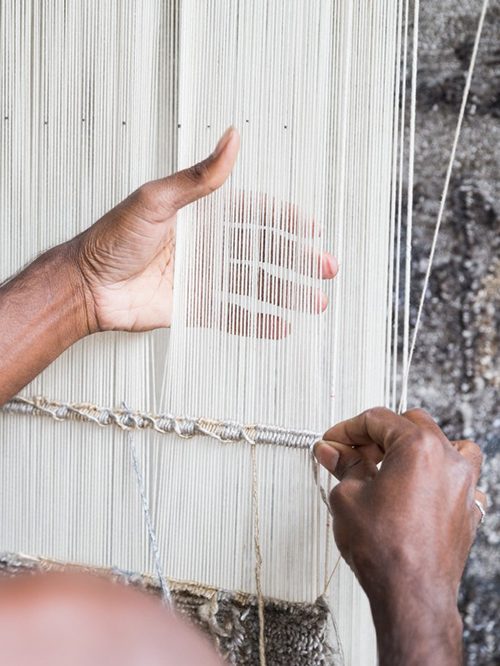
Persian Knot
Persian knots are created by looping the weft yarns around one warp thread and cutting knot by knot. This technique produces a very tight, dense and thin rug, making it ideal for stair runners and areas where low clearances are needed. Persian knots yield much finer and more detailed patterns than other knot techniques.
Turkish Knot
In the Turkish knot technique, yarn is passed between two adjacent warps, brought back under one, wrapped around both forming a collar, then pulled through the center so that both ends emerge between the warps. This technique produces a strong knot that is well-suited to thicker rugs.
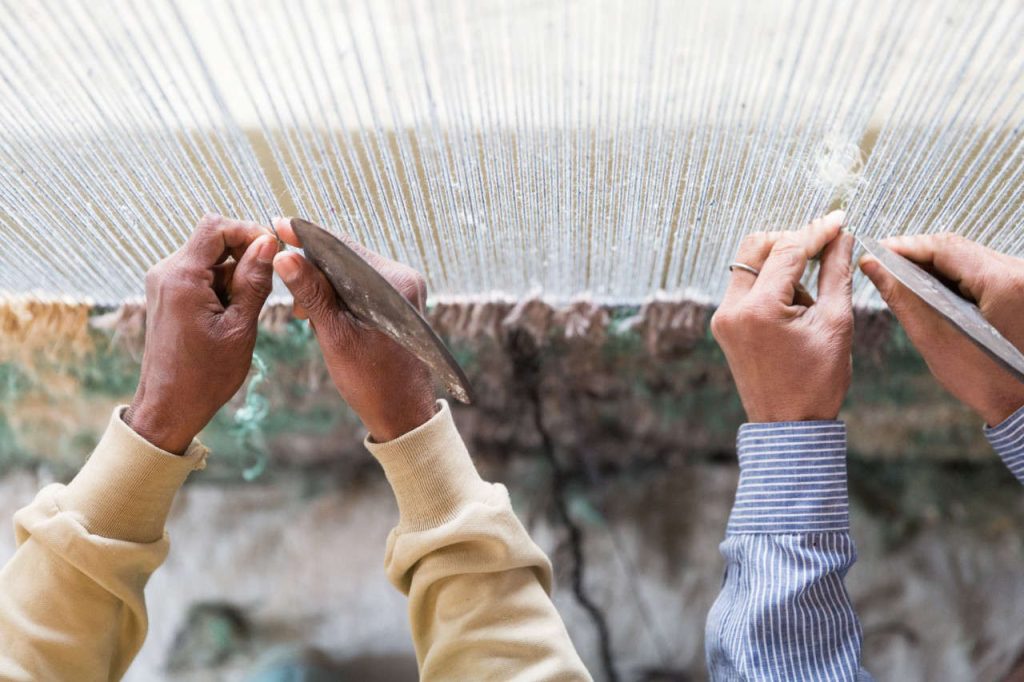
Hand-Tufted Rugs
Hand-tufted rugs have no knots and are created using a hand-held tool to punch strands of wool into a canvas which is stretched on a frame. The rug maker pushes the yarns through the back side of the rug, and then trims the front of the rug to the desired thickness. When finished, the rug is removed from the frame, and a scrim fabric is glued to the back to hold the yarns in place.
Although hand-tufting doesn’t require the same high level of skill or mastery as hand-knotting, this technique produces a beautiful, quality rug worthy of any interior. Pricing is dependent on the number of colors and complexity of design.
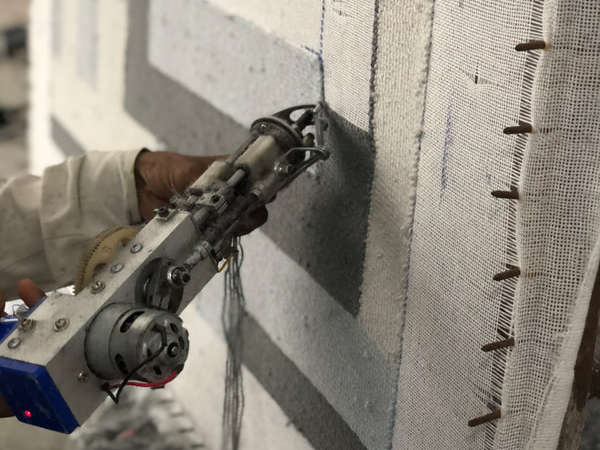
Hand-Loomed Rugs
These rugs are made on a handloom, a simple apparatus used for fast weaving. In this technique, warp threads pass alternately through a heddle – which is suspended on a shaft of a loom – and through the space between the heddles. Raising the shaft raises half the threads; lowering the shaft lowers the same threads. The threads passing through the spaces between the heddles remain in place.
Hand-loomed rugs can be made as flatweave rugs and pile rugs, but they have some limitations in terms of pattern. While this weaving technique can create plain, solid, cut and loop, and high and low combinations in horizontal lines, it cannot produce intricate designs.
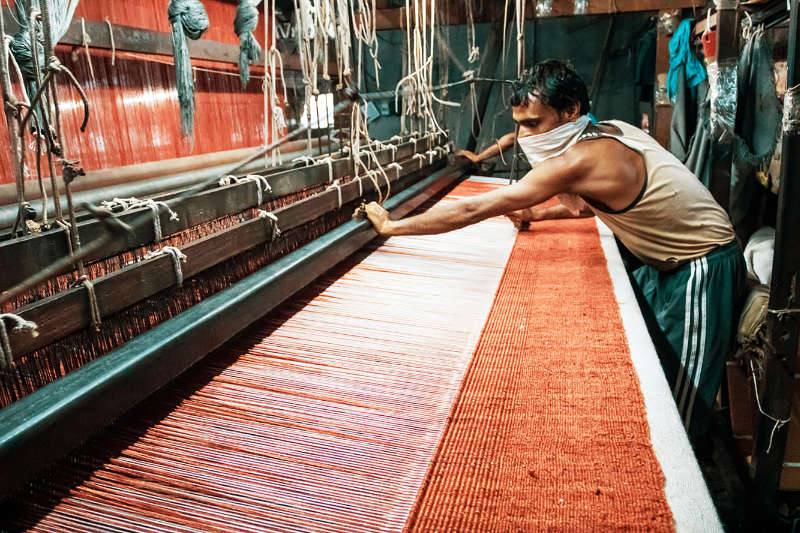
Flatweave Rugs
Flatweave rugs are woven on a horizontal loom. Examples of rugs created using this technique include dhurries, kilims, soumaks, needlepoint, paddle weaves and tapestry rugs. Flatweave rugs have been used for thousands of years by people of many cultures for flooring, wall hangings, saddle pads and prayer rugs.
Because these rugs are woven, rather than knotted, they have no tufted pile, which makes them thinner and less insulating than knotted rugs. However, the thinness of flatweave rugs can be an advantage, as it makes them highly versatile. Flatweaves work well in a number of settings and are well-suited to high traffic areas. Any NIBA design can be used in a flatweave construction.
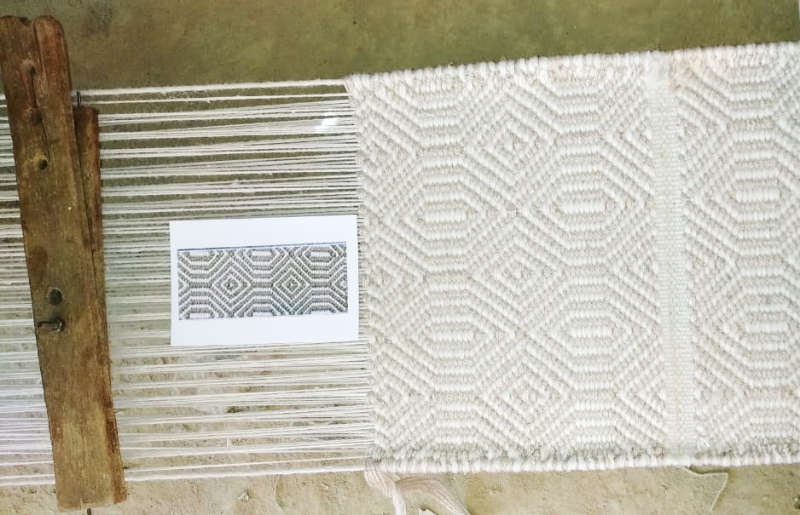
Soumak Rugs
Soumak rugs are a type of flatweave. This specific weaving technique involves continuously wrapping around the warp loops in the same colored design area. While being wrapped around the warps in the same area, threads may also be wrapped in other design areas by reversing or going up the sides. The overall effect achieved by this technique is a braided look. Soumak rugs are strong and durable, and are a smart choice for a number of settings.
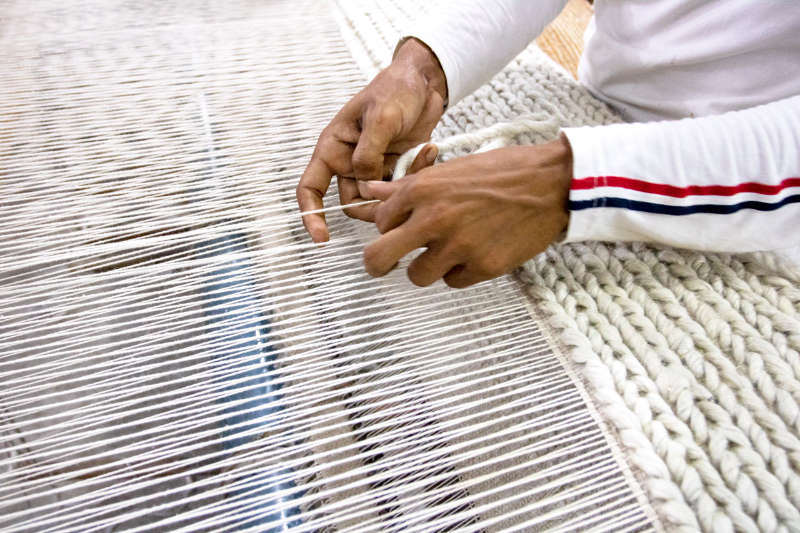
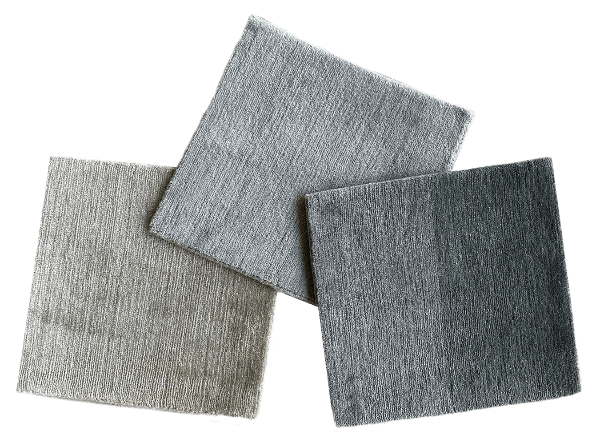
About Blends
A blend is a combination of two fibers that are mixed prior to spinning the yarn. Blends produce an overall subtlety and understated sophistication. Less directional than solid silks or other shiny fibers, a blend reduces the appearance of foot prints.
Popular blends are wool and silk, and wool and tencel. Rugs made from a wool blend are easier to maintain because they contain lanolin, a natural, self-cleaning oil exuded by sheep.
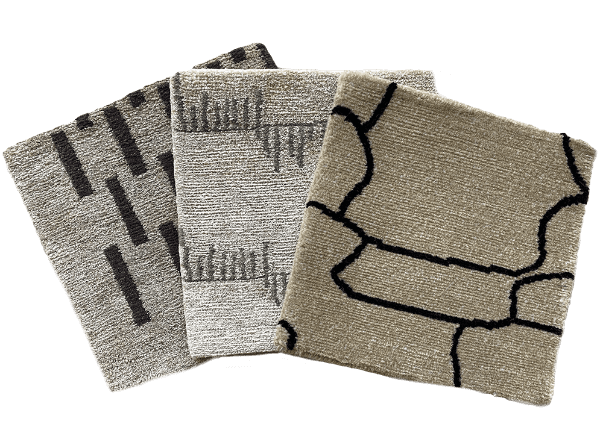
About Tweeding
Tweeding gives a rug an interesting pixelated look. The process occurs before the rug is woven, and involves twisting together various yarns and/or fibers of different colors to achieve the desired effect.
A tweed of two or more colors can create a textured “salt and pepper” effect. Tweeding several closely related colors can mimic the look of an abrash or textured fiber, such as hemp or allo, for those who like the look but not the feel of those fibers.


